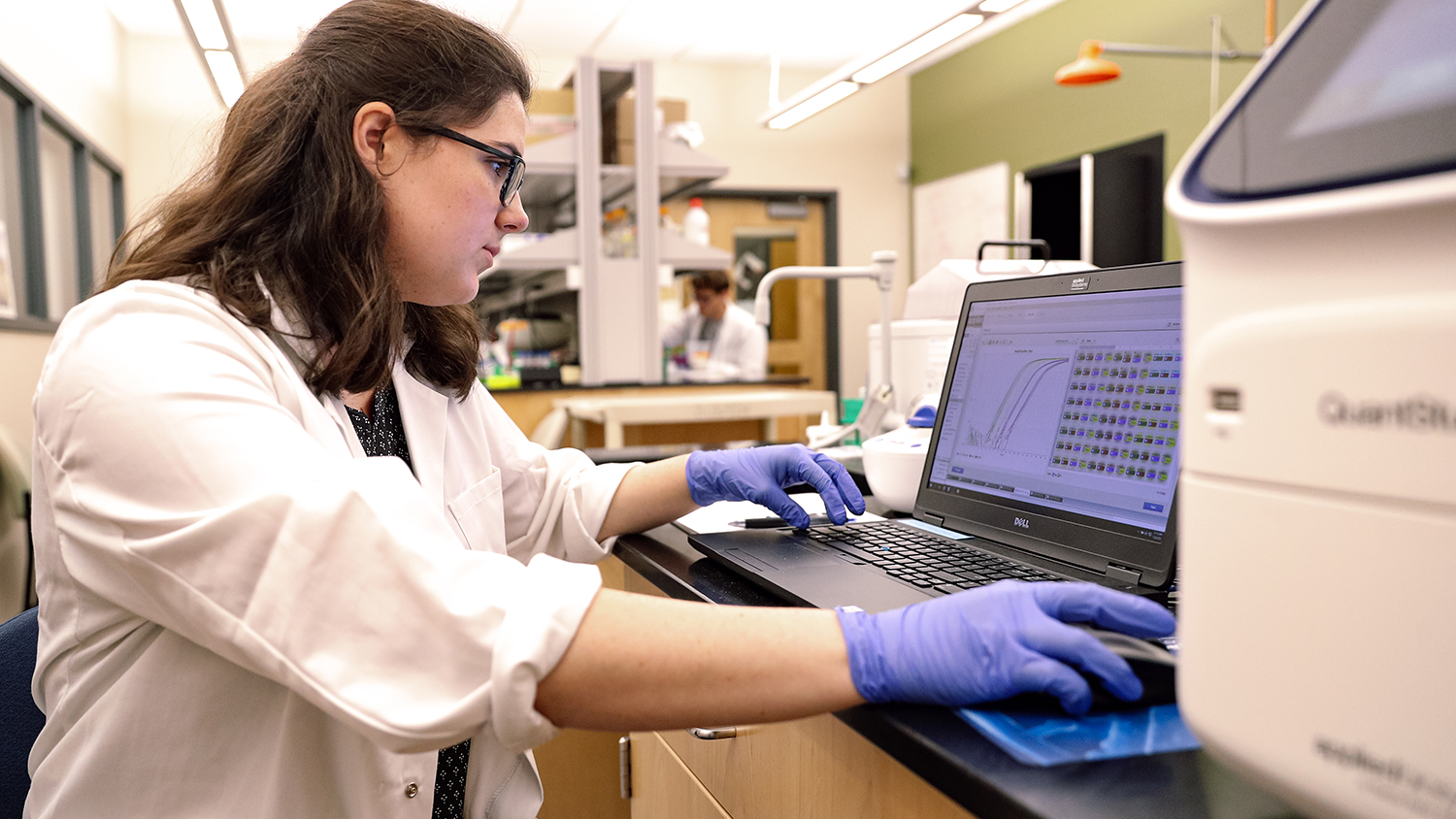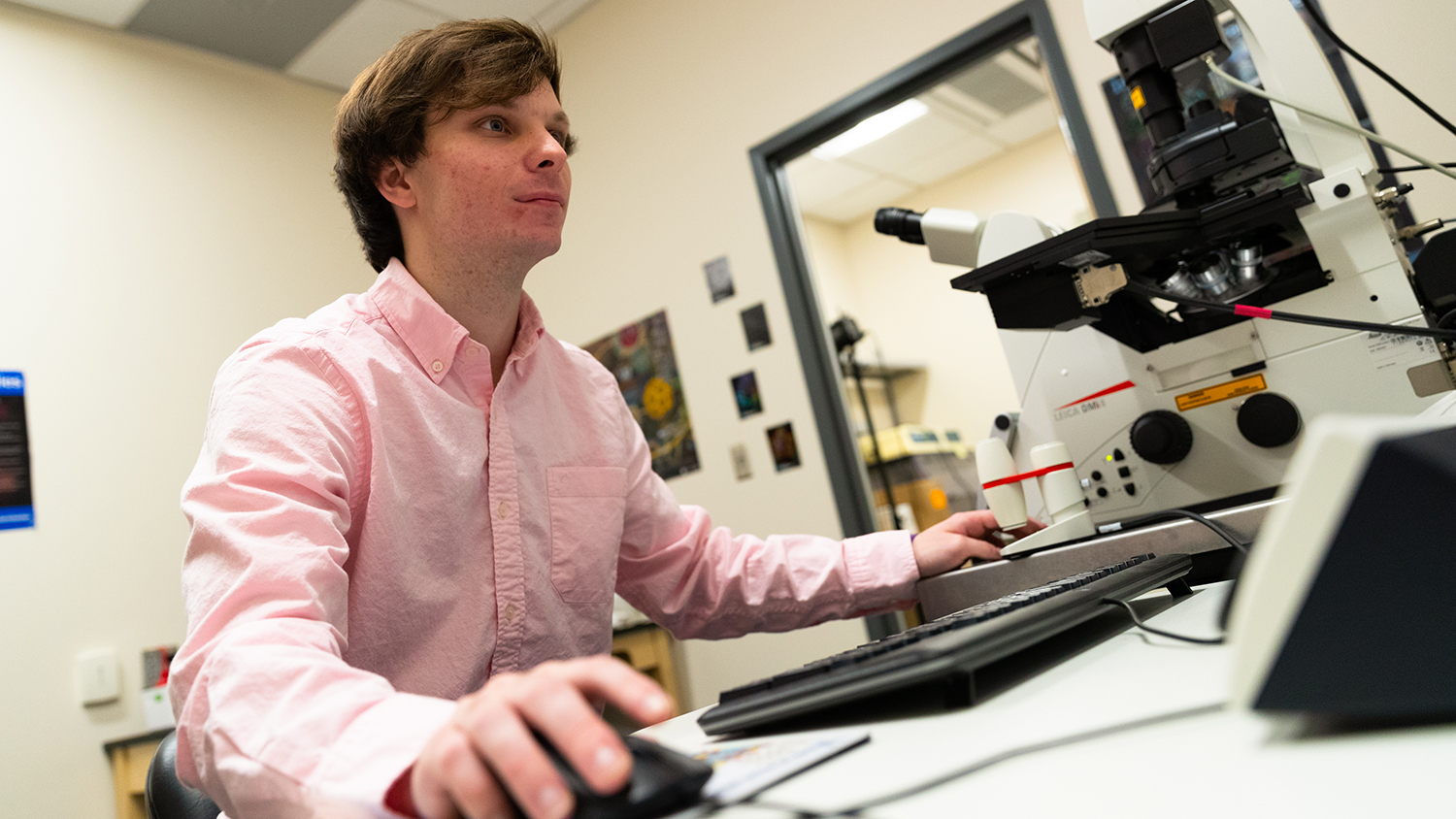Proteins that help cells move like Spiderman also control cell spreading
Cells move around in our bodies kind of like Spiderman, by sticking to something and pulling themselves along. It’s well known that cells adhere to each other using sticky proteins called desmogleins, but new research shows these same proteins help individual cells move about the body and that they control spreading.
The work, published by the Nature publication Scientific Reports, could help explain a host of activities, from wound healing to cancer metastasis. It builds on earlier work, which showed that proteins related to desmogleins control how cancer cells move.
To migrate, cells attach to the extracellular matrix – the skyscrapers and light poles of Spiderman’s world – made up of “protein fibers throughout your body that are there for cells to hold onto,” said Adi Dubash, senior author and the Henry Keith and Ellen Hard Townes Assistant Professor of Biology at Furman University.
Dubash and four undergraduate students – Tucker Shelton ’22, Madison Thomas ’21, Hunter Alexander ’20 and Evan Thomes ’21 – studied the first step in migration, the attachment and spreading.
“We found something really striking. When there’s no desmoglein-2 in the cell, individual cells connect to the extracellular matrix much better, and they spread,” Dubash said. Attachment and spreading of cancer cells was much more enhanced.
In other words, desmoglein-2 kept cell spreading in check, which could be important in wound healing, where cells spread and attach to each other to repair damaged tissue, and in cancer, when individual cells sometimes break off from a tumor and migrate, or when cancer cells spread uncontrollably.
“There is evidence that cancer cells lack desmogleins,” Dubash said. The work in his lab reinforces that evidence, and, he said, the lack of desmoglein, either by a mutation or a biochemical signal that shuts them down, might be a cause of the spreading, not just a consequence.
The team also had a hunch about a specific protein, called Rap1, that is known to control cell spreading. They hypothesized that without desmoglein-2, more Rap1 is activated inside cells.
“Our hypothesis was correct,” Dubash said.
In their experiments, they blocked Rap1 in cells already lacking desmoglein-2, which brought spreading back to the level seen in the control, or normal, group of cells.
“It gave us an indication that there was a functional link there because if desmoglein-2 controlled spreading through another protein besides Rap1, then blocking Rap1 would do nothing at all.”
The finding with Rap1 contributes to other researchers’ work that blocking Rap1 might be a targeted therapy for cancer.
In another set of experiments, Dubash’s lab discovered that blocking desmoglein-2 also leads to cells making more extracellular fibers, which in turn promotes cell spreading, like creating more buildings for Spiderman to swing from. Trying to figure out why this happens is the focus of current work by three new undergraduate students in the Dubash lab: Bea Mateo ’22, Brandon Johnson ’22 and Lara Rudman ‘22.
Doing work of this level, which gets published in a high-profile journal, is uncommon for small liberal arts and sciences universities like Furman, Dubash said. He credits investments in infrastructure, scientific equipment, research funding that’s available for faculty and students and the quality and intellectual curiosity of students.
“The students did the majority of the experiments,” Dubash said. They worked through semesters and many of them worked during summers as research fellows, funded by Furman. Alexander is now a student at the Edward Via College of Osteopathic Medicine, Thomas is pursuing a doctoral degree at the University of Alabama at Birmingham, Thomes is getting a master’s degree in biotechnology at Georgetown University, and Shelton is doing neuroscience research through a summer internship program at the University of Pennsylvania before coming back to Furman for his senior year.
Daniel E. Conway, an associate professor of biomedical engineering at Virginia Commonwealth University, was also an author on the study for providing the cells lacking desmoglein-2. This project was funded by Developmental Research Project sub-awards, via the National Institutes of Health South Carolina IDeA Networks of Biomedical Research Excellence grant (awarded to Dubash); an NIH R35 award (awarded to Conway); and summer research fellowships funded by Furman.

